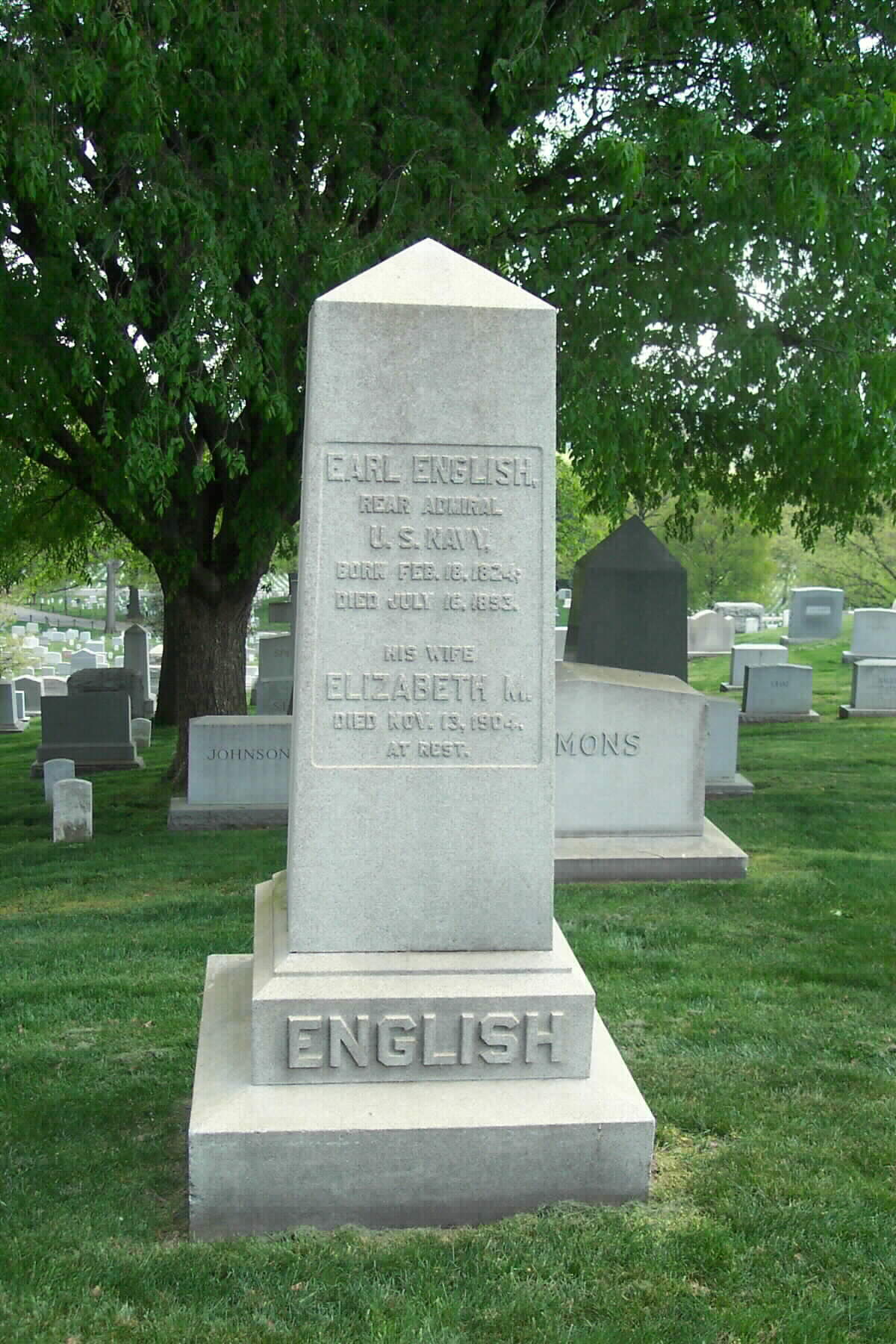Born at Crosswicks, New Jersey, February 18, 1824, he entered the Navy on February 25, 1840.
He was actively engaged during the Mexican War on the Pacific coast in Mexico and California. He also served throughout the Civil War. In 1868, when the Tycoon of Japan was defeated by Mikado’s Party,he found refuge on Commander English’s ship, USS Iroquis. He was promoted to Rear Admiral in 1884, retired from the Navy in 1886 and died at Washington, D.C. on July 16, 1893.
He is buried in Section 2 of Arlington National Cemetery. His wife, Elizabeth English, who died on November 13, 1904, is buried with him.
NOTE: His son-in-law, Presley Marion Rixey, Rear Admiral, United States Navy, and his daughter, Earlena J. English Rixey, are also buried in Arlington National Cemetery.
Earl English, Naval Officer, born in Crosswicks, Burlington County, New Jersey, 18 February 1824. He was educated in Trenton, New Jersey, and entered the naval service, 25 February 1840.
His first cruise was in the U. S. frigate “Constellation” around the world, returning after an absence of four years, then being ordered to the Naval Academy in Annapolis, where he was graduated in 1846. He joined the U. S. frigate “Independence,” and was actively employed on the Pacific coast,, principally in California. He was at the capture of Mazatlan, Mexico, in November 1847, and remained there till the close of the Mexican war in 1852 he was attached to the U. S. brig “Dolphin,” which was engaged in “deep sea soundings” across the Atlantic Ocean from Newfoundland.
He was appointed Master, 1 March 1855, and Lieutenant on 14 September In 18,57 he cruised in the East Indies, and took part in the engagement with the barrier forts, seven miles below Canton, China, in which he was wounded.
He was made Lieutenant Commander, 16 July 1862, and served throughout the Civil War, being employed principally in the Gulf of Mexico and the sounds of North Carolina, and commanding at different periods the ” Somerset,” “Sagamore,” and “Wyalusing.”
In 1866 he was appointed Commander, and after the war served four years on the East India station, he was then employed in Japanese waters during the struggle that resulted in the’ overthrow of the Tycoon. When the latter was defeated at Osaka, 13 February 1868, he received him on board the “Iroquois,” which was then anchored in the Osaka River.
He was commissioned Captain, 28 September 1871, Commodore, 25 March 1880, and Rear Admiral, 4 September 1884, at which time he resigned the office of chief of the Bureau of Equipment and Recruiting, which he had held for six years. He then took command of the European station, and was retired, 18 February 1886.
Michael Robert Patterson was born in Arlington and is the son of a former officer of the US Army. So it was no wonder that sooner or later his interests drew him to American history and especially to American military history. Many of his articles can be found on renowned portals like the New York Times, Washingtonpost or Wikipedia.
Reviewed by: Michael Howard

